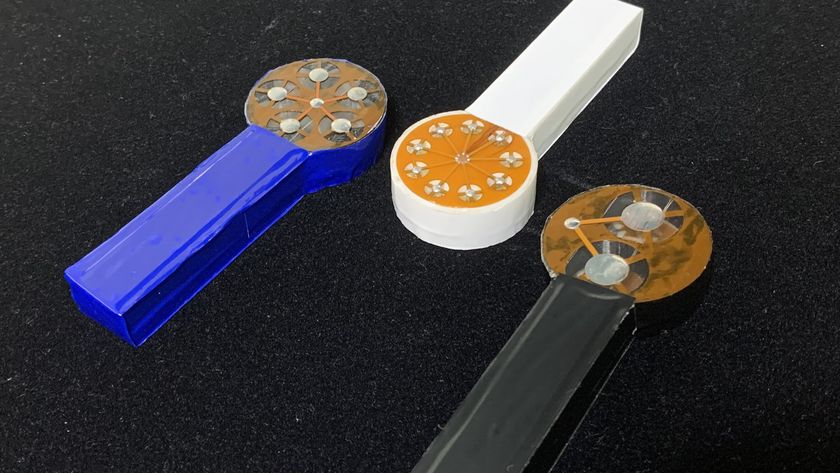Gulf Oil Spill Cleanup Gets Assist from Virtual Reality
As the ruins of the Deepwater Horizon drilling rig gush 210,000 gallons of oil per day into the Gulf of Mexico, federal officials are turning to virtual reality to forecast the disaster.
Using a variety of simulation programs, emergency response teams are evaluating everything from deep-ocean pressure to winds at the surface to predict the movement of the oil spill. The simulations can also provide scientists with a virtual testing ground for real-world responses.
"We are able to assist the on-scene response by predicting the oil concentration in the water column, with and without the application of dispersant chemicals at the oil release point," National Oceanic and Atmospheric Administration (NOAA) senior scientist William Lehr wrote in an email to TechNewsDaily.
"This information is used by the response team to calculate environmental trade-offs for different response options."
Dispersants are detergent-like substances that break up oil slicks small droplets so marine bacteria and other natural processes can break them down more quickly.
Under the Sea
Sign up for the Live Science daily newsletter now
Get the world’s most fascinating discoveries delivered straight to your inbox.
The Deepwater Horizon rig sunk more than a mile beneath the ocean surface on April 22. Since then, engineers have struggled and failed to halt the flow of oil from the well. Efforts are now underway to build and deploy underwater pollution domes that would cover the leaks and pump the oil to the surface, and chemical dispersants are being released near the well head and at the surface in an attempt to break down the oil.
But predicting where the oil is going — and how containment efforts like dispersants will affect the slick — isn't easy. First, scientists have to figure out how the oil is behaving down at the ocean floor. Water pressure affects the buoyancy of oil, said Poojitha Yapa, a professor of civil and environmental engineering at Clarkson University in New York, as does the water temperature, the size of the oil droplets and the ratio of oil to gas.
To deal with all of these variables, Yapa created the Comprehensive Deepwater Oil and Gas Blowout Model, dubbed CDOG for short.
CDOG's job is to take information about deepwater spills and return a prediction of how fast the oil and gas will reach the surface and where they're likely to emerge. Researchers can then add virtual dispersant chemicals to the mix to find out if thinning out the slick will help the oil degrade faster or just spread the toxicity around.
Because so little is known about the volume or makeup of the Gulf leak, it's difficult to make a confident prediction about this spill, Yapa said. But, he said, his collaborators at NOAA have found that the initial CDOG calculations match reality.
Wind and Waves
Just knowing where the oil will come up isn't enough. NOAA scientists are using ocean currents and wind direction to model the movement of the growing slick at the surface and plan containment efforts.
NOAA uses its own models as well as simulations from the Naval Oceanographic Office and Texas A&M University, said Doug Helton, coordinator of incident operations for NOAA. The information is updated daily and available on the NOAA Web site.
"We have pretty good confidence in the 72 hour timeframe," Helton said. "Once you get past that, you start using more statistical probability-type models."
Forecasting this spill is particularly challenging, Helton said, because less is known about deepwater spills compared to tanker spills at the surface, which are more common. Tanker spills also involve a known amount of oil, while no one knows how much oil the Deepwater Horizon spill will put out.
"This release could go on for 60 to 90 days or more," Helton said. "There's a lot of things that could go on in that time period that would greatly impact our model, like the fact that hurricane season is starting in a month."

Stephanie Pappas is a contributing writer for Live Science, covering topics ranging from geoscience to archaeology to the human brain and behavior. She was previously a senior writer for Live Science but is now a freelancer based in Denver, Colorado, and regularly contributes to Scientific American and The Monitor, the monthly magazine of the American Psychological Association. Stephanie received a bachelor's degree in psychology from the University of South Carolina and a graduate certificate in science communication from the University of California, Santa Cruz.












